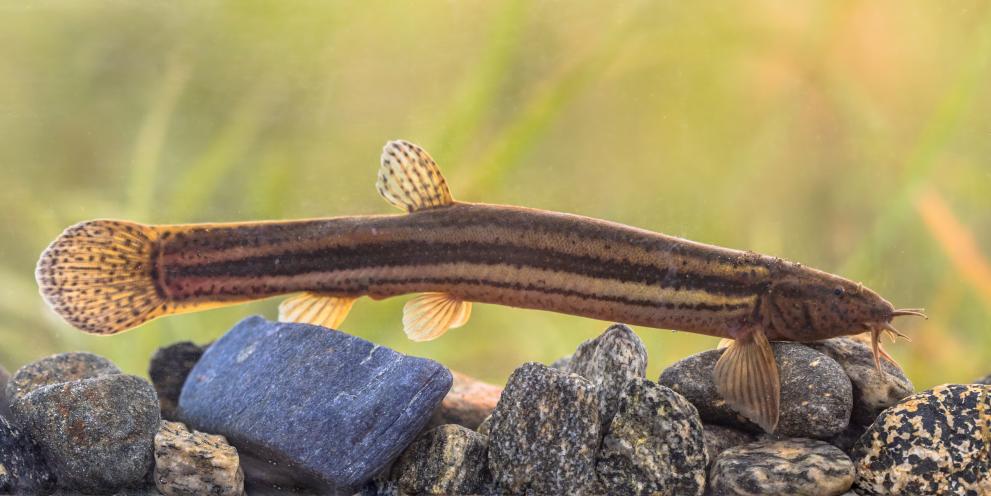
Catalonian freshwater rivers are the main route through which non-native fish species enter Spain. These rivers already have more invasive species (31) than native (27). Invasive loaches, a type of freshwater fish, are expanding rapidly across the waterways in Catalonia, contributing to a steep decline in abundance of native fish species.
Loaches have been historically rare in Catalan waterways where the only two native species, C. paludica and C. calderoni, have very restricted ranges. However, as a result of the introduction (e.g. via sports fishing) of non-native species, the region now hosts a number of loach species. Invasive species profiling, based on previous characteristics of invasive species, is thought to be a useful tool to identify species at high risk of becoming invasive. However, the researchers challenge this assumption, providing examples where the characteristics of successful invaders have changed over time.
This study highlights that the number of invasive freshwater fish species in Catalonian waters are increasing in abundance. By using genetic techniques to analyse extensive fish data from the region, it is possible to find out if the characteristics of invasive loach species in the area differ from previously successful invasive fish species. Understanding the dynamics of invasive loach species in this region, including potential introduction pathways, can inform conservation management, to better prevent biological invasions occurring in the future.
The Catalonian study area covered the Ebro River basin and most of the Segre River basin, to the west, and a number of coastal basins draining into the Mediterranean to the east – including the Llobregat and Ter Rivers. The data analysed by the researchers was gathered from over 3 500 fish-sampling visits to the study area, between 2007 and 2019. The researchers carried out molecular analyses of mitochondrial and nuclear genes of 71 fish samples, from 21 different locations, on non-native loaches including: Barbatula, Cobitis, and Misgurnus/Paramisgurnus. The researchers compiled data on non-native traits of fish species collected, and the year that these species were first recorded in Catalonia.
The analysis of the samples found that at least five non-native loach species had established themselves in the freshwater areas of Catalonia (Cobitis bilineata, Misgurnus anguillicaudatus, Misgurnus bipartitus, Paramisgurnus dabryanus, and a yet undescribed Barbatula species), and most of these were spreading. The data also showed that one of the two regionally native loach species, Cobitis paludica, had spread into new locations in Catalonia, and was expanding through these non-native river basins.
The genetic analysis helped identify species status, and aided understating of the origin of non-native loaches. The genetic data showed that more than one introduction had occurred, and clarified that rather than one invasive species of Asian loach, there were actually three species. It also demonstrated that these Asian loach populations did not derive from a known loach introduction event in the Ebro delta, but rather represented new introduction events. The origin of the Ebro delta M. anguillicaudatus population loaches, first detected in 2001, was linked to the ornamental fish trade, with the accepted theory being that the fish escaped from an exotic animal importer.
Genetic results also highlight the unresolved taxonomy of loaches, particularly for European Barbatula, with all Catalonian populations belonging to a distinct genetic line, possibly representing a new species. The genetic findings show that these populations all derive from an initial introduced population in the Segre basin. Genetic markers found in this potentially new species (haplotypes) have been found in a number of French rivers. The native range of this species remains to be determined, however the researchers suggest this could plausibly be in France.
The researchers highlight that fish aquarium releases, alongside live bait fishing, are the two most likely routes of introduction of non-native loaches into the area. Although live bait fishing is illegal in Spain, they add that fishermen frequently admit to using Cobitis loaches as live bait.
This analysis shows that non-native Catalan loaches are successful invaders. These fish have distinct traits which, the researchers argue, suggests that the prohibited species lists are not sufficient to prevent biological invasions. The researchers propose that developing more flexible management tools (e.g. based on fish traits and not only on species identities), alongside prioritising prevention and rapid responses to new introductions would hinder the establishment and spread of non-native species.
Source:
Clavero, M., Suh, J., Franch, N., Aparicio, E., Buchaca, T., Caner, J., Garcia‐Rodriguez, S., Llimona, F., Pou‐Rovira, Q., Rocaspana, R., and Ventura, M (2023) Invaders they are a‐changing: A recent, unexpected surge of invasive loaches in Catalonia, Freshwater Biology, 68(4): 621–631. Available from: https://onlinelibrary.wiley.com/doi/10.1111/fwb.14051 [Accessed 17 July 2023].
To cite this article/service:
“Science for Environment Policy”: European Commission DG Environment News Alert Service, edited by the Science Communication Unit, The University of the West of England, Bristol.
Notes on content:
The contents and views included in Science for Environment Policy are based on independent, peer reviewed research and do not necessarily reflect the position of the European Commission. Please note that this article is a summary of only one study. Other studies may come to other conclusions.
Details
- Publication date
- 27 July 2023
- Author
- Directorate-General for Environment

